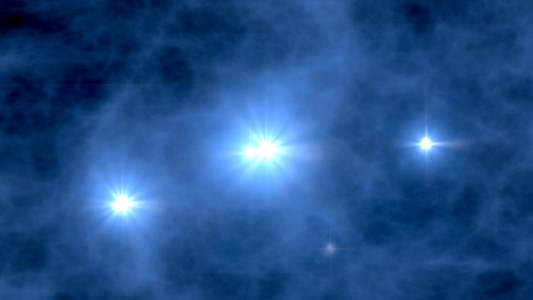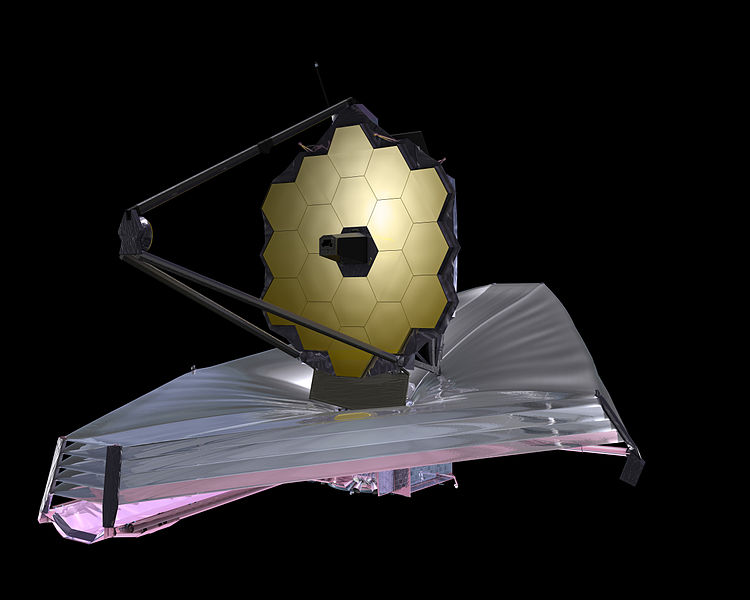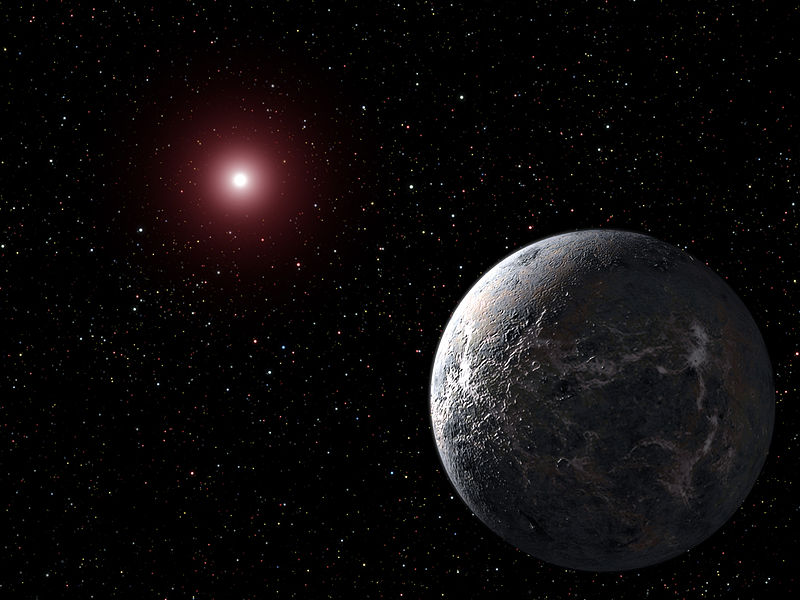

Population III stars and galaxies
As most population III stars are predicted to be short-lived and to have formed only for a brief period of cosmic time, very few – if any – have survived to the present epoch. One of the most promising techniques to hunt for such objects is therefore to exploit the time machine provided by the deepest astronomical images. Since the light from the most distant regions of the Universe has taken billions of years to reach us, we are seeing these objects as they were early on, when population III stars still roamed the cosmos. The problem is simply to catch the population III signatures among the myriad of more mundane objects that also turn up in these ultradeep fields.
In a sequence of papers, we have used cosmological simulations, gravitational lensing models and spectral synthesis codes to study the detectability of various types of population III objects (Zackrisson et al. 2010ab, 2011ab, 2012; Rydberg et al. 2013, Rydberg 2013). While individual population III stars in the early Universe are beyond the reach of existing and upcoming telescopes (unless we can catch their supernova explosions), small galaxies that for a brief period come to be dominated by the light from many population III stars may well be within reach. Using imaging data from the Hubble Space Telescope, we have uncovered the first population III galaxy candidates at redshifts beyond z ≈ 7 (Zackrisson et al. 2011b, Rydberg et al. 2013b) and are using the largest groundbased telescopes to do follow-up spectroscopy of these objects.
Selected talks:


The galaxies that reionized the Universe
While a host of astronomical objects could in principle have contributed to this process, star-forming galaxies are usually seen as the top candidates, since they are already known to exist in great numbers at the relevant epoch. However, this scenario hinges on the assumption that ionizing radiation can escape from these objects and into the intergalactic medium. Can we somehow find out whether this really happened?
At low to intermediate redshifts, hydrogen-ionizing (Lyman continuum) photons that escape into the intergalactic medium can be measured directly, and our team has made the two first direct detections of Lyman continuum leakage in the local Universe (Bergvall et al. 2006, Leitet et al. 2013). In the reionization epoch, indirect methods must instead be used – even if Lyman continuum photons make it out of these galaxies, the increasingly neutral intergalactic medium will inevitably absorb these photons before they can reach our telescopes. We have pioneered the first method capable of constraining the Lyman continuum escape fractions of individual galaxies in the reionization epoch (Zackrisson et al. 2013), and are eagerly awaiting the upcoming James Webb Space Telescope to make the required observations.
Selected talks:

Fun stuff
If Earth-like planets are so common, why is the Milky Way not teeming with aliens? The Search for Extraterrestrial Intelligence (SETI) has been on for over 50 years, yet no intelligent signals have ever been discovered. And if the typical Earth-like planet is much older than Earth, why is not the entire Milky Way already colonized by some advanced super-civilization? One potential solution to this conundrum (known as the Fermi paradox) is that even though planets are dime a dozen, intelligent life is exceedingly rare. If this is the case, the only chance of detecting intelligent life beyond Earth may be to extend the search radius beyond the Milky Way.
As part of the first Swedish SETI project, we use galaxy scaling relations to set upper limits on so-called Kardashev type III civilizations – extraterrestrials with the means to harvest a substantial fraction of the radiative energy from the galaxies in which they reside. Our results indicate that, if such star-harvesting civilizations exist at all, less than 0.5% of the disk galaxies in the local Universe seem to be hosting them.
Selected talks: